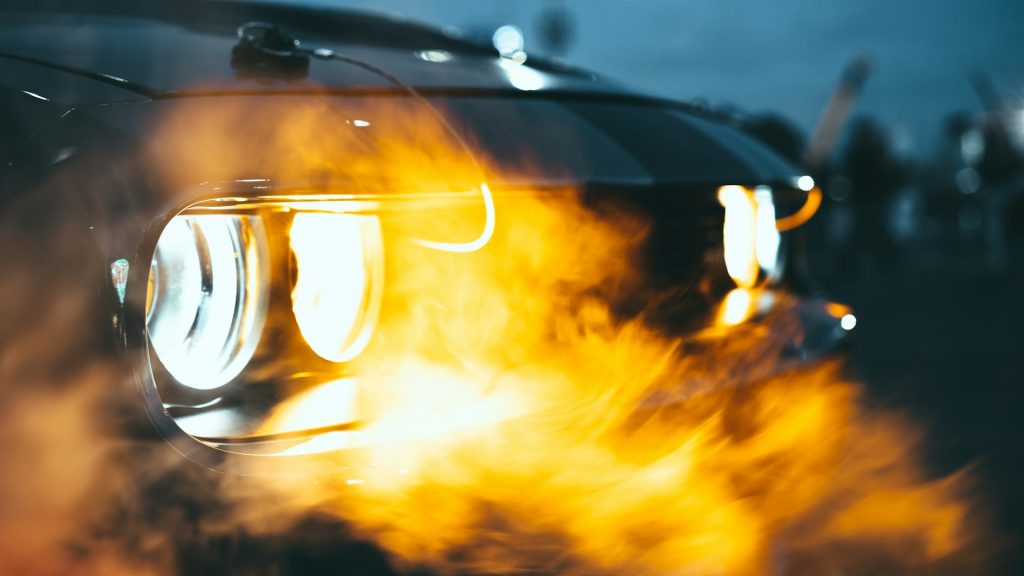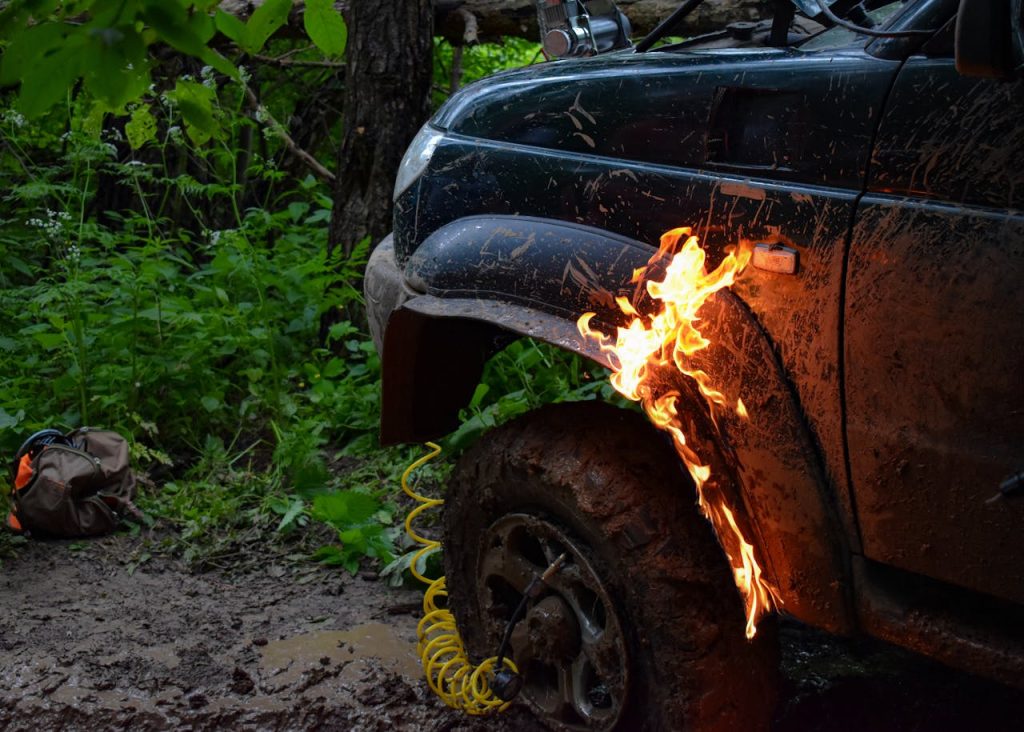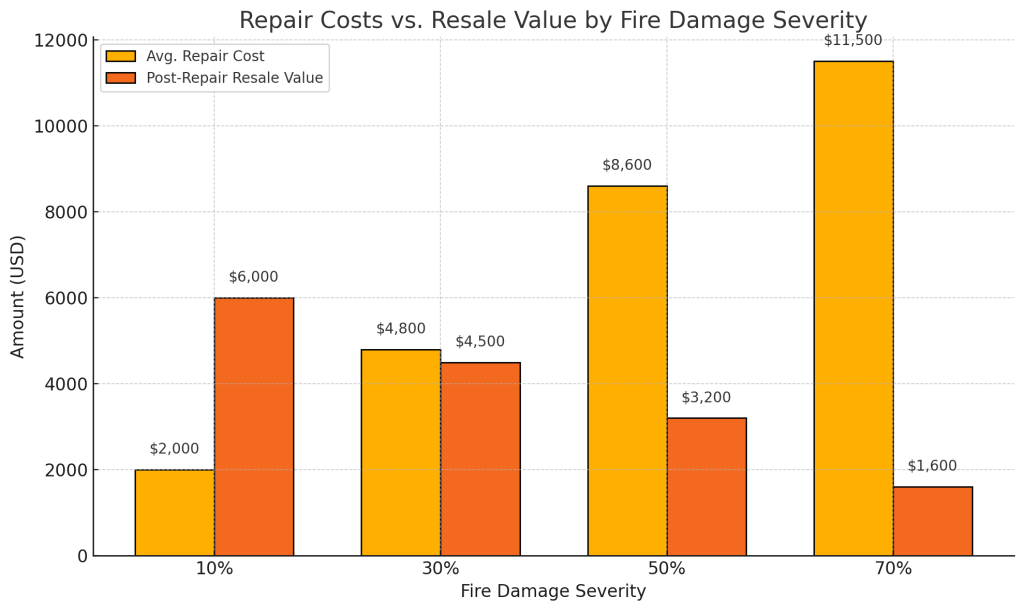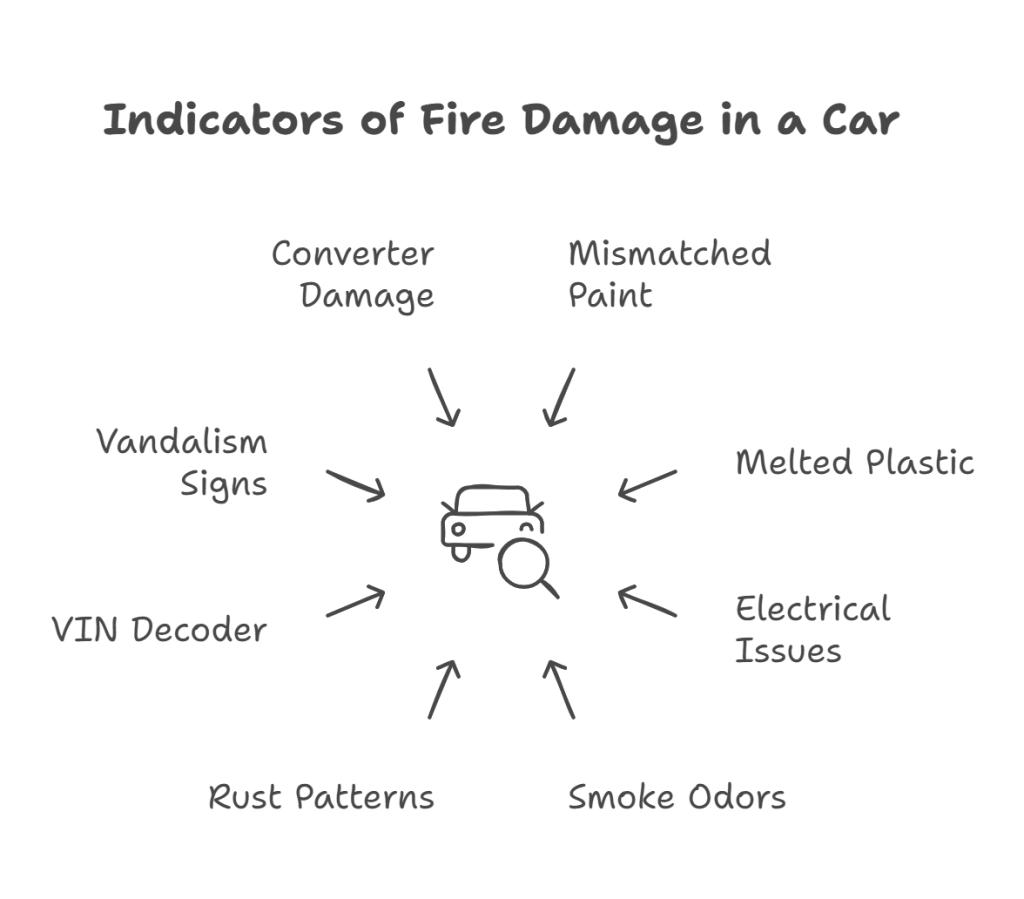:format(webp)/vulcan.abetter.bid%2Fwp-content%2Fuploads%2F2025%2F06%2FqGzWty2oBlQ-unsplash.jpg)
My Car Caught on Fire – What Now? How to Handle Car Fire Damage
Vehicle fires injure or endanger thousands of drivers annually. Over 174,000 highway vehicle fires are reported each year, according to recent data. A car fire can start from various sources, including electrical malfunctions, overheated engine components, or fuel system failures. Car enthusiasts may ask, “My car caught on fire – what now?” Realizing the leading causes and immediate response steps can save lives and minimize property damage. Highway vehicle fires account for nearly 13% of all fire department responses nationwide.
The National Fire Protection Association: Highway vehicle fires cause approximately $1.3 billion in property damage annually. Electrical issues account for 45% of all vehicle fires.
What to Do Immediately If Your Car Catches Fire

Do you see flames in your vehicle? Quick action is essential. The first minutes determine whether you escape safely or face serious injury. Never underestimate how rapidly fire can spread through a car.
Immediate Steps:
- Pull over safely and turn off the engine immediately to stop gasoline flow.
- Exit the vehicle and move to a safe distance of at least 100 feet from flames.
- Call 911 or local emergency services immediately and report your exact location and car fire details.
- Never attempt to open the hood if smoke or flames are visible underneath.
- Do not try to retrieve personal items from the burning car.
- Stay away from the gas tank area and avoid breathing toxic smoke.
- Wait for emergency responders and warn others to keep their distance.
- Alert other road users about the car fire hazard on the roadway.
A Better Bid research statistics: Car-related smoke inhalation causes respiratory complications in 67% of cases, with enclosed spaces like a garage amplifying toxic exposure.
What Happens to a Car After a Fire?
Fire damage typically renders a vehicle a total loss. It affects everything from the engine to the electricity and destroys critical safety systems.
Does Fire Damage Affect a Vehicle Title?
Yes, fire damage significantly impacts vehicle titles. Insurance companies usually declare fire-damaged cars as total losses, resulting in a salvage title. This designation follows the car permanently. Resale value and insurability are critically affected. A car with a salvage title requires special disclosure during any future sale, and potential buyers should always use a VIN decoder to verify the vehicle’s history.
How Car Fires Affect Vehicle Recalls and Manufacturer Liability
When fires occur due to manufacturing defects, automakers may face liability issues. Federal investigations often examine patterns in fires to determine if repairs are necessary. The National Fire Protection Association works with automakers to identify common vehicle fire trends.
| Cause | Manufacturer Responsibility | Typical Outcome |
| Faulty wiring from the factory | Full liability | Vehicle recall issued |
| Catalytic converters overheating | Partial liability | Service bulletin |
| Fuel system defects | Full liability | Immediate action |
| Battery malfunctions in electric vehicles | Full liability | Software updates/recall |
Common Reasons Cars Catch Fire

Most vehicle fires start from preventable issues, such as mechanical or electrical failures. The common causes include overheating, electrical failures, and fuel leaks.
Electrical System Failures
Electrical fires are the central cause of vehicle fires. Worn components create dangerous conditions that ignite flammable materials throughout the car.
Common electrical fire sources:
- Loose wiring connections that create dangerous sparks near gasoline lines.
- Overloaded circuits from aftermarket modifications drawing excessive power.
- Corroded battery terminals generating high temperatures and electrical arcing.
- Damaged electrical wiring from rodent activity or normal wear.
- Defective electrical wiring in older cars that haven’t been properly maintained.
Engine Overheating
An overheated engine can reach temperatures exceeding 2,000 °F. Oil and other flammable liquids are ignited. Remember, monitoring engine temperature and maintaining proper oil levels prevents most overheating incidents. Low oil levels cause fast friction and heat buildup in motor components.
Studies show that fluid leaks contribute to 23% of fires, with engine oil and transmission fluid being the most common culprits.
Accidents and Collisions
Collision damage can rupture fuel systems and create electrical faults. The impact often damages multiple systems simultaneously, increasing risks throughout the car.
Accidents carry the following threats:
- Fuel tank punctures releasing gasoline vapors into the engine compartment under the hood.
- Damaged electrical systems creating sparks in close proximity to gasoline.
- Battery damage in EVs causing thermal runaway and intense flames.
- Ruptured oil lines spreading flammable liquids across hot engine parts.
Can You Finance or Insure a Fire-Damaged Vehicle?
Financing and insuring damaged vehicles is challenging. Most lenders refuse loans for cars with fire damage histories. Insurance companies also deny coverage or charge extremely high premiums. According to Abetter Bid, only 17% of insurers approve coverage for fire-branded titles, and 83% of these cars receive no financing offers at all. The matter becomes more complex when dealing with a car with too many owners.
What Insurance Inspectors Look For After a Fire
Insurance adjusters conduct thorough investigations to determine car fire causes and assess damage extent. Their findings directly impact claim settlements and future coverage decisions. These analyses help identify whether the incident resulted from mechanical failure or other factors.
Key inspection points:
- Evidence of electrical fault patterns in damaged systems;
- Heat damage progression throughout the car’s interior and engine;
- Fuel system integrity and potential leak sources from the tank;
- Signs of arson or intentional fire setting, including accelerant residue;
- Maintenance records showing whether the car was properly maintained;
- Catalytic converters condition and exhaust system heat damage;
- Battery condition and electrical defects that may have caused ignition;
- Access points where external fire sources might have reached the vehicle.
Should You Repair a Fire-Damaged Car or Sell It?
Repairing damaged vehicles rarely makes financial sense. The extensive damage to electrical systems, engine components, and safety features typically exceeds the car’s value. Fire affects everything from the hood mechanisms to interior electrical parts, making replacement the more practical choice for most car owners.
We compared average repair costs to post-repair resale values across different fire damage levels. It clearly shows that once damage exceeds 30%, repair costs typically outweigh the car’s market value, making selling the better financial decision.

How to Prevent a Car Fire in the Future
Regular maintenance and awareness of hazards significantly reduce the vehicle fire threat. Most fire hazards are preventable through proper care and early problem detection. It is worth noting that properly maintained cars experience far fewer fires than neglected ones.
| Prevention Area | Action Required | Frequency |
| Electrical components | Inspect for loose wiring and fraying | Every 6 months |
| Fluid leaks | Check for oil and fuel drips under the car | Monthly |
| Engine temperature | Monitor gauge readings during every drive | Every drive |
| Battery condition | Clean terminals, check voltage, and connections | Quarterly |
| Exhaust system | Inspect for overheating signs and damage | Annually |
| Catalytic converters | Check for excessive temperature and proper function | Annually |
According to A Better Bid studies, leading automotive safety systems have undergone rapid changes over the past decade, with 78% of new vehicles now featuring advanced temperature monitoring compared to just 34% five years ago.
How to Check a Car for Fire Damage Before Buying

Previous car fire damage often gets concealed during car sales. Buyers should carefully inspect used cars for telltale signs of fire exposure before purchase. This becomes especially important when considering a car with too many owners in its history.
Fire damage warning signs:
- Mismatched paint colors or fresh paint in the engine area.
- Melted plastic components under the hood or around the battery.
- Unusual electrical issues or non-functioning systems throughout the car.
- Persistent smoke odors that remain despite extensive cleaning attempts.
- Rust patterns inconsistent with normal wear, especially around electrical areas.
- Check the VIN decoder for comprehensive accident and fire history reports.
- Verify the car doesn’t have a pattern suggesting car vandalism or suspicious incidents.
- Inspect converters for signs of extreme temperature damage or replacement.
Fires start from various causes, but electrical problems and overheating remain the primary hazards. The rapid changes in modern car technology, especially in electric vehicles, create new hazards. Cars with internal combustion engines carry different risks than electric vehicles. However, both require careful attention to maintenance and warning signs.
Summary
Car fires pose serious safety hazards. They require immediate evacuation and professional response. Most car fires start from electrical defects, overheated parts, or problems affecting the engine compartment. Prevention through regular maintenance and quick recognition of warning signs protects people. Above all, prioritize your safety over trying to save the car, regardless of its price or service life. This is the most important thing you need to do.
![]() FAQ
FAQ
Show more
Will a Fire-Damaged Car Still Deploy Airbags in an Accident?
Damage typically destroys airbag systems, rendering them inoperative. The intense temperature melts wiring and damages sensors, making these critical safety features unreliable in subsequent collisions, affecting vehicle safety.
Do Aftermarket Modifications Increase Fire Risk?
Aftermarket installations significantly increase the hazard when improperly installed. Poor electrical connections and overloaded circuits create dangerous conditions that can spark near fuel systems.
High-risk modifications:
Sound systems with inadequate wiring gauge that overheat the battery.
Performance chips affecting temperature and oil circulation.
Custom lighting requiring additional electrical load beyond factory specifications.
Is a Vehicle Fire Considered an Accident?
Regardless of the underlying cause, car fires are classified as accidents for insurance purposes. This classification affects claims processing and coverage determinations under comprehensive insurance policies for any car involved.
How Long Does It Take for a Car to Burn Completely?
A typical car burns completely within 15-20 minutes. This is the time from the moment the flame spreads throughout the vehicle. Gasoline-powered cars may burn faster due to fuel involvement, while temperature can cause rapid destruction of all systems.
How Does a Car Catch Fire While Parked?
Vehicles standing still catch fire through electrical malfunctions or temperature buildup, even when engines are off. The hazard exists because certain systems remain active and can malfunction in rare cases.
Why do cars catch fire when standing still or in a garage?
Battery overcharging creating excessive temperature.
Electrical shorts in always-powered systems near flammable materials.
Catalytic converters cooling improperly when parked in a garage.
External fire sources, including car vandalism targeting vehicles intentionally.

:format(webp)/vulcan.abetter.bid%2Fwp-content%2Fuploads%2F2022%2F10%2F2022-10-05-11.30.40-150x150.jpg)
 FAQ
FAQ :format(webp)/vulcan.abetter.bid%2Fwp-content%2Fuploads%2F2025%2F12%2Fcopart-vs-manheim-cover-1.png)
:format(webp)/vulcan.abetter.bid%2Fwp-content%2Fuploads%2F2025%2F11%2Fautobidmaster-vs-copart-1.png)
:format(webp)/vulcan.abetter.bid%2Fwp-content%2Fuploads%2F2025%2F11%2Fa-better-bid-vs-autobidmaster.png)

